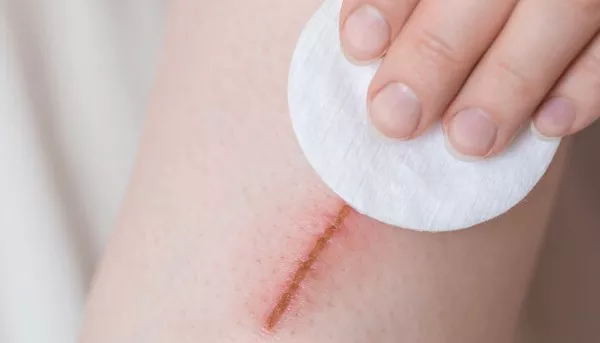The heart, a remarkable organ central to our vitality, can sometimes bear the marks of injury in the form of scar tissue. As medical science advances, the question arises: can heart scar tissue be repaired? This comprehensive exploration delves into the intricacies of heart scar tissue, examining the factors contributing to its formation, the challenges it presents, and the promising avenues of research seeking to unlock the secrets of cardiac regeneration. From understanding the physiology of scar formation to exploring cutting-edge therapies, join us on a journey to unravel the mysteries of the heart and the possibility of repairing its scar tissue.
The Anatomy of Heart Scar Tissue: Unveiling the Healing Process
Heart scar tissue, a consequence of injury or damage to the cardiac muscle, is a complex tapestry woven by the body’s natural healing mechanisms. When the heart sustains an injury, such as a heart attack or trauma, the damaged tissue undergoes a reparative process. This involves the formation of scar tissue, which serves as a structural support to replace the injured or lost muscle. While this process is essential for maintaining the heart’s integrity, the composition of scar tissue differs from the original muscle, lacking the contractile ability necessary for normal cardiac function. Understanding the anatomy of heart scar tissue sets the stage for exploring strategies to potentially repair or regenerate this vital organ.
The Impact of Heart Scar Tissue: Navigating Challenges to Cardiac Function
The presence of heart scar tissue introduces challenges to the intricate dance of cardiac function. Unlike healthy muscle, scar tissue lacks the elasticity and contractility crucial for the heart’s rhythmic pumping action. As a result, areas with significant scar tissue may contribute to impaired cardiac function, potentially leading to conditions such as heart failure. The impact of heart scar tissue extends beyond mechanical challenges, influencing the heart’s electrical conductivity and increasing the risk of arrhythmias. Navigating these challenges requires a nuanced understanding of how scar tissue alters the dynamic interplay of the heart’s physiological processes.
Current Approaches: Managing Heart Scar Tissue in Clinical Practice
While complete regeneration of heart scar tissue remains an elusive goal, current medical approaches focus on managing its impact and preventing further deterioration of cardiac function. Pharmacological interventions, such as angiotensin-converting enzyme (ACE) inhibitors and beta-blockers, aim to alleviate stress on the heart and improve its pumping efficiency. Surgical interventions, including coronary artery bypass grafting (CABG) and ventricular assist devices (VADs), may be employed to bypass blocked arteries or support weakened areas of the heart. These approaches, while valuable in managing symptoms and improving quality of life, do not directly address the regeneration of heart scar tissue.
Emerging Frontiers: Exploring Regenerative Medicine for the Heart
The quest to repair heart scar tissue has given rise to the exciting frontier of regenerative medicine. Researchers and clinicians are exploring innovative strategies to stimulate the regeneration of cardiac tissue and, potentially, replace scar tissue with functional muscle. Stem cell therapies represent a prominent avenue of investigation, harnessing the regenerative potential of various cell types, including mesenchymal stem cells and induced pluripotent stem cells. These cells, when strategically delivered to the heart, hold the promise of differentiating into cardiac muscle cells and promoting tissue repair. While regenerative approaches are still in the early stages of development, they signify a paradigm shift towards addressing the root cause of heart scar tissue.
Stem Cells and Heart Regeneration: A Beacon of Hope
Stem cells, with their unique ability to transform into different cell types, emerge as a beacon of hope in the pursuit of heart regeneration. Mesenchymal stem cells, sourced from various tissues including bone marrow and adipose tissue, have demonstrated the capacity to enhance cardiac repair through anti-inflammatory and pro-regenerative mechanisms. Induced pluripotent stem cells, engineered to revert to a pluripotent state, offer a personalized approach by utilizing a patient’s own cells for therapeutic purposes. The strategic deployment of these stem cells, whether through direct injection or innovative delivery systems, showcases the potential to repair heart scar tissue and restore cardiac function.
Cytokines and Growth Factors: Orchestrating Cardiac Repair
Beyond stem cells, the intricate signaling network of cytokines and growth factors plays a pivotal role in orchestrating cardiac repair. Researchers are exploring the therapeutic potential of these signaling molecules to stimulate the regeneration of heart scar tissue. By understanding the molecular cues that drive tissue repair, scientists aim to develop targeted interventions that promote the recruitment of progenitor cells and facilitate the remodeling of damaged areas. The delicate balance of these signaling pathways holds the key to unlocking the regenerative capacities inherent in the heart, offering a tailored approach to address the unique challenges posed by heart scar tissue.
Biomaterials and Tissue Engineering: Crafting a Scaffold for Healing
The marriage of biomaterials and tissue engineering introduces a sophisticated approach to crafting a scaffold for heart healing. Researchers are exploring the design of biomaterials that mimic the extracellular matrix of the heart, providing a supportive structure for cell adhesion and growth. These biomaterials, often infused with signaling molecules, create a conducive environment for regenerating cardiac tissue. Tissue engineering strategies aim to develop patches or grafts that, when applied to damaged areas, integrate seamlessly with the existing tissue and promote functional recovery. This multidisciplinary approach holds the potential to reshape the landscape of heart scar tissue repair.
Challenges and Considerations: Navigating the Road to Clinical Translation
As the field of regenerative medicine for the heart advances, it confronts a myriad of challenges and considerations on the road to clinical translation. Ensuring the safety and efficacy of novel therapies demands rigorous preclinical studies and robust clinical trials. The optimal selection of cell types, delivery methods, and dosages requires careful calibration to achieve therapeutic benefits while minimizing potential risks. Moreover, addressing the heterogeneity of heart scar tissue, which varies in composition and characteristics, poses a complex puzzle for researchers seeking universally effective solutions. Navigating these challenges is paramount to realizing the transformative potential of regenerative therapies for heart scar tissue.
Ethical Considerations: Balancing Promise and Prudence
The pursuit of heart scar tissue repair through regenerative medicine introduces ethical considerations that underscore the need for a balanced approach. While the promise of restoring cardiac function and improving the lives of individuals with heart conditions is compelling, ethical frameworks must guide the responsible development and deployment of these therapies. Transparent communication, informed consent, and ongoing ethical oversight are essential elements in navigating the intersection of scientific innovation and ethical responsibility. As researchers forge ahead, the ethical dimensions of regenerative approaches become integral to shaping a future where the benefits of healing heart scar tissue are realized with wisdom and prudence.
The Future Landscape: Envisioning a Heart Reshaped by Regeneration
In envisioning the future landscape of heart health, the prospect of repairing scar tissue emerges as a transformative paradigm. Regenerative medicine, with its arsenal of stem cells, cytokines, growth factors, and biomaterials, pioneers a path towards healing the heart at its core. While challenges persist and ethical considerations guide the trajectory of research, the momentum towards unlocking the regenerative potential of the heart is palpable. As ongoing studies illuminate the intricate mechanisms of cardiac repair, the possibility of repairing heart scar tissue moves from the realm of aspiration to the threshold of clinical reality. The journey to reshape the heart through regeneration beckons, offering hope to those who have faced the enduring impact of cardiac injury.
[inline_related_posts title=”You Might Be Interested In” title_align=”left” style=”list” number=”6″ align=”none” ids=”3888,3886,3892″ by=”categories” orderby=”rand” order=”DESC” hide_thumb=”no” thumb_right=”no” views=”no” date=”yes” grid_columns=”2″ post_type=”” tax=””]































